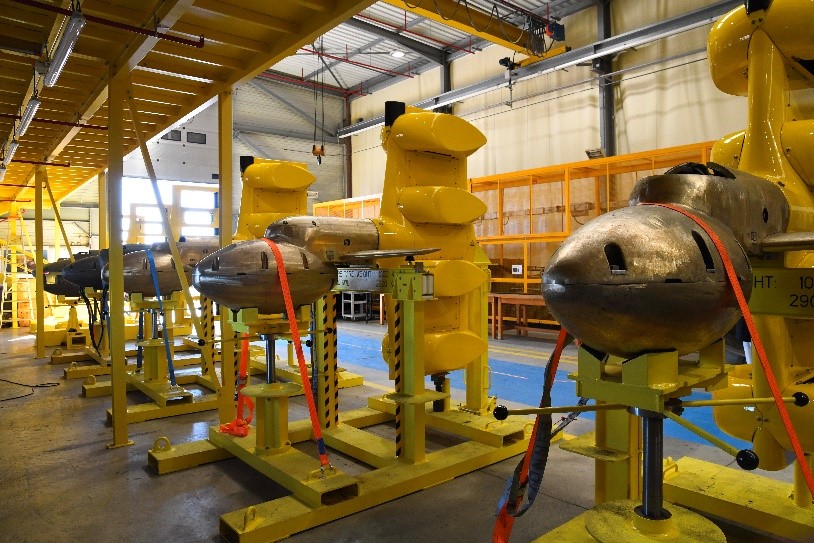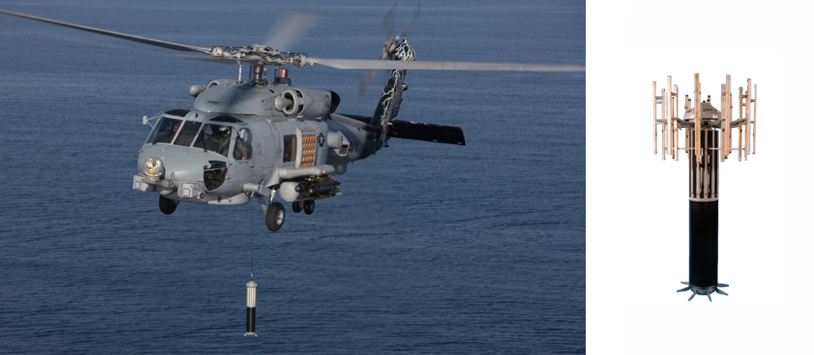Navies Face Future Fight in Undersea Defense
Innovation is key to advancing the U.S. Navy’s long-term dominance of the undersea domain. “We need to think about how do we do battlefield innovation…We are focusing on expanding the reach, the depth, and the lethality of our conventionally manned fleet through disruptive and emerging technologies, that includes unmanned systems,” said Chief of Naval Operations Admiral Lisa Franchetti at a recent defense forum.
Through technological innovation including advanced undersea sensing and detection, the U.S. Navy has enjoyed unchallenged dominance of the undersea domain from the Cold War to the present day. This dominance has ensured that maritime highways are open to the vital transportation of goods among nations. Maintaining freedom of navigation in the face of potential adversaries who are fielding increasingly capable undersea threats is also a defining technical challenge for the Navy and its allies.
Advanced Acoustic Concepts, LLC (AAC) a wholly owned subsidiary of Thales Defense & Security, Inc. (TDSI) headquartered in Hauppauge, NY is providing the Navy with proven combat systems that address the current undersea warfare challenges of anti-submarine warfare and mine countermeasures (MCM) solutions.
AAC capability is enabling the Navy’s surface force to be more effective at hunting enemy submarines with the Combined Active/Passive Towed Array Sonar (CAPTAS)-4. The Navy selected the CAPTAS-4 Variable Depth Sonar system for installation onboard the new Constellation Class Frigates in May 2022. The CAPTAS-4 transmitter provides an unmatched sound source for detecting submarines and larger UUVs at significant distances. In October 2023, TDSI’s AAC delivered the first CAPTAS-4 to the FFG-62 program ahead of schedule. The complete manufacturing and assembly of all follow-on CAPTAS-4 systems will take place at a state-of-the-art production facility in Lemont Furnace, Pennsylvania.

CAPTAS-4 manufacturing production is underway.
While identifying undersea threats is crucial in naval operations, it is only one piece in a larger group of needs. Combined data, computing power and artificial intelligence for command and control of an entire operation are all vital for success.
For this reason, AAC offers system integration and sensor signal processing through command-and-control suites such as the Littoral Combat Ship (LCS) Mission Module common compute environment for mine detection and targeting. This portable control station solution offers a real-time data-fused common operational picture of undersea objects of interest, transmitted from data captured by the Thales Synthetic Aperture Mine Detection Imaging Sonar (SAMDIS).
The SAMDIS underwater solution, being introduced to market by AAC, uses three acoustic beams to accurately identify an object instead of one. Harnessing three acoustic beams allows users to detect undersea objects accurately while determining which are mines faster than current synthetic aperture sonar systems. The mission module combat system processes the ultra-high resolution SAMDIS imagery and uses AI-enhanced Automatic Target Recognition (ATR) software applications to quickly analyze the object and provide leaders with a detailed situational awareness picture for more informed decision-making. To complete this real-time detect-to-engage mission, AAC also offers a mine neutralization capability in the form of a small unmanned underwater vehicle (UUV).
Additionally and to date, TDSI has delivered over 300 Airborne Low Frequency Sonars (AN/AQS-22) to the U.S. Navy for employment onboard the MH-60R helicopters. These dipping sonars provide the MH-60R platform with long-range detection and a wide coverage rate to clear an area of interest or as a complementary anti-submarine warfare asset to sonars onboard surface vessels for target localization and engagement.

ALFS Airborne dipping sonar onboard MH-60R helicopter © Lockheed Martin.
The comprehensive innovative approach Thales has taken in the undersea domain will enable the Navy to detect, understand and eliminate underwater threats in tactically relevant timeframes. By providing a family of sensing and situational awareness capabilities, Thales is enabling the Navy and international security partners together to stay ahead of the worldwide near-term threat.